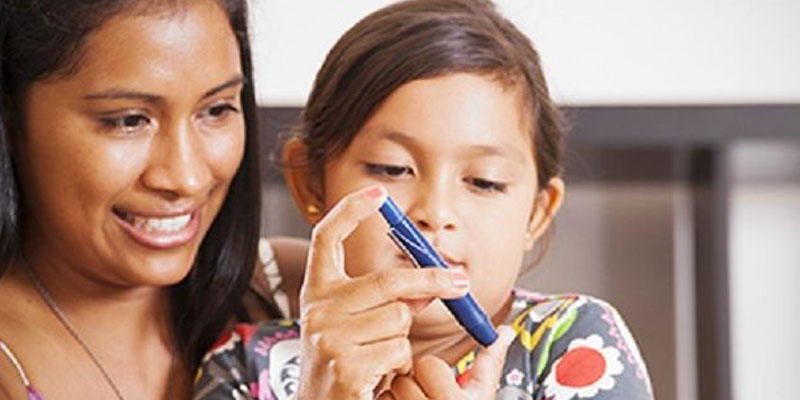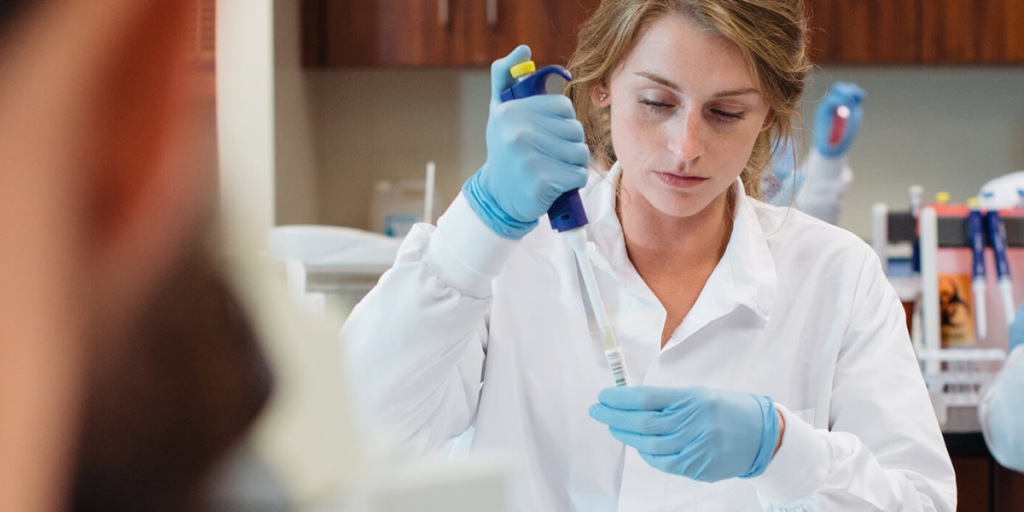Beta cells in the pancreas produce insulin. Their death is a key feature of Type 1 diabetes, and that loss starts long before diagnosis. However, there has been no straightforward way to measure that early loss.
Anath Shalev, M.D., and colleagues at the University of Alabama at Birmingham now have identified an early biomarker of Type 1 diabetes-associated beta-cell loss in humans – microRNA-204, or miR-204.
“Serum miR-204,” Shalev said, “may provide a much needed novel approach to assess early Type 1 diabetes-associated human beta-cell loss, even before onset of overt disease.”
MicroRNAs are found in animal and plant cells, where they help control gene expression. In previous work, Shalev found that miR-204 plays key roles in regulating insulin production and other critical beta-cell processes.
Now, in a study published in the American Journal of Physiology-Endocrinology and Metabolism, Shalev and colleagues report that miR-204, which is highly enriched in human beta cells, is released by dying beta cells. After that release, it becomes detectable in circulating blood.
Measurements using human blood samples showed that serum miR-204 was elevated in children and adults with early Type 1 diabetes, and in people with autoantibodies who are at risk for Type 1 diabetes, but it was not elevated in Type 2 diabetes or another autoimmune disease. Furthermore, serum miR-204 levels were inversely correlated with remaining beta-cell function in recent-onset Type 1 diabetes.
“Having a non-invasive, straightforward method sensitive enough to detect early beta-cell loss – especially prior to the diagnosis of Type 1 diabetes – is critical in order to allow for any therapeutic intervention to be started as early as possible in the disease process and ideally before the majority of beta cells has been destroyed,” Shalev said.
Shalev is a professor in the UAB Department of Medicine’s Division of Endocrinology, Diabetes and Metabolism, and she directs the UAB Comprehensive Diabetes Center.
Discovery of the biomarker was a step-by-step, hypothesis-driven process, starting from the observation that miR-204 had 108-fold higher expression in pancreatic islet beta cells as compared to pancreatic alpha cells.
The researchers first showed that miR-204 was released by cultured rat beta cells after induction of cell death by streptozotocin. Then they showed that killing of beta cells in mice given streptozotocin led both to diabetes, as expected, and to a massive increase in serum miR-204 levels.
Next, they showed that Type 1 diabetes-associated inflammatory cytokines, which induce beta cell death, caused release of miR-204 from both cultured rat beta cells and primary human pancreatic islets.
To test miR-204 in humans, they looked at serum from people receiving autologous pancreatic islet transplantations. It is known that islet transplantation is associated with massive beta-cell death shortly after the transplantation. The researchers found that miR-204 levels in serum rose sharply, 20 to 40 minutes after islet infusion.
The researchers next found that serum miR-204 was significantly elevated in children with recent-onset Type 1 diabetes. It was also elevated nearly threefold in adults with recent onset Type 1 diabetes and more than twofold in people with autoantibodies that put them at risk for Type 1 diabetes.
In contrast, it was not significantly elevated in people with Type 2 diabetes or people with the autoimmune disease rheumatoid arthritis. It was not significantly elevated in people who have had Type 1 diabetes for a long time and have lost most of their beta cells.
Serum miR-204, Shalev and colleagues found, correlated with remaining beta-cell function, as measured by the “gold standard” of mixed-meal stimulated C-peptide area under the curve. Serum miR-204 also showed good predictive diagnostic power in the context of early Type 1 diabetes, including the ability to differentiate adult recent-onset Type 1 diabetes from Type 2 diabetes. That is useful because adults with Type 1 diabetes are often misdiagnosed when first found to have diabetes.
Shalev says the study at UAB was highly interdisciplinary. Co-authors with her on the paper, “Serum miR-204 is an early biomarker of type 1 diabetes-associated pancreatic beta-cell loss,” are Guanlan Xu, Lance A. Thielen, Junqin Chen, Truman B. Grayson, Tiffany Grimes and Fernando Ovalle, Division of Endocrinology, Diabetes and Metabolism, UAB Department of Medicine; S. Louis Bridges Jr., Division of Clinical Immunology and Rheumatology, UAB Department of Medicine; Hubert M. Tse, UAB Department of Microbiology; Blair Smith, UAB Department of Surgery; Rakesh Patel, UAB Department of Pathology; Peng Li, UAB Department of Biostatistics; and Carmella Evans-Molina, Indiana University School of Medicine, Indianapolis, Indiana.
Support came from a National Institutes of Health Human Islet Research Network award and grant and from a JDRF grant.
At UAB, Shalev holds the Nancy R. and Eugene C. Gwaltney Family Endowed Chair in Juvenile Diabetes Research.
This story originally appeared on the University of Alabama at Birmingham’s UAB News website.
(Courtesy of Alabama NewsCenter)













